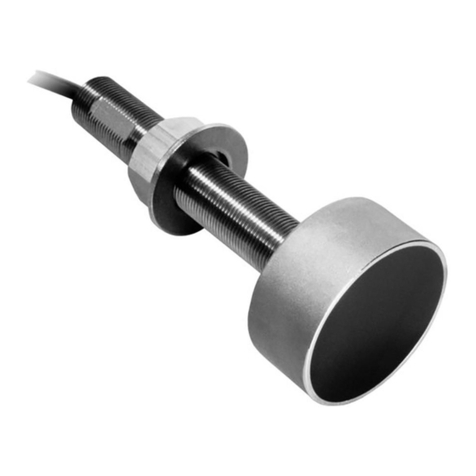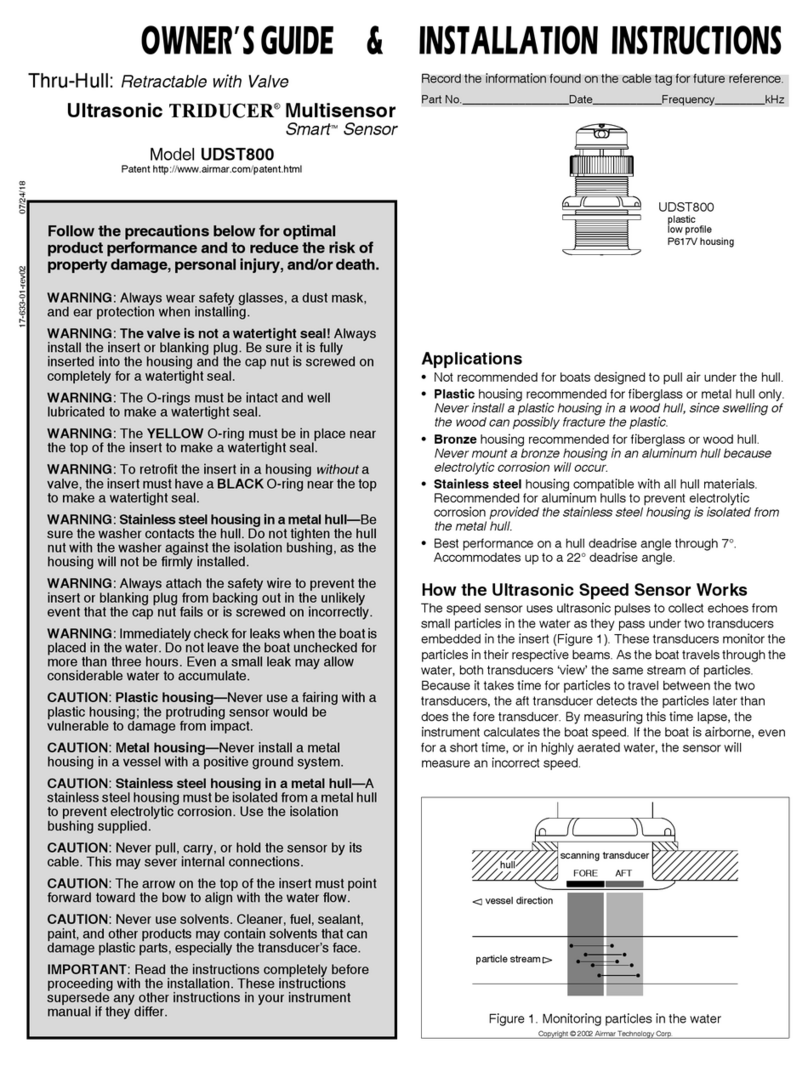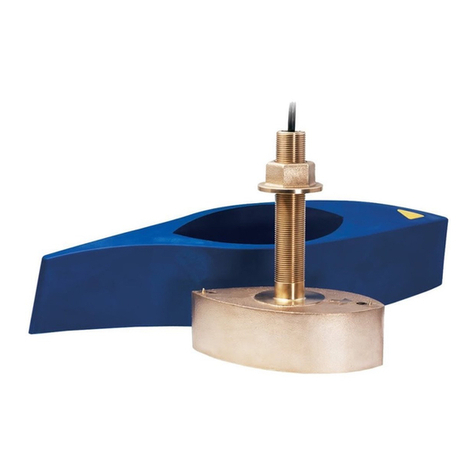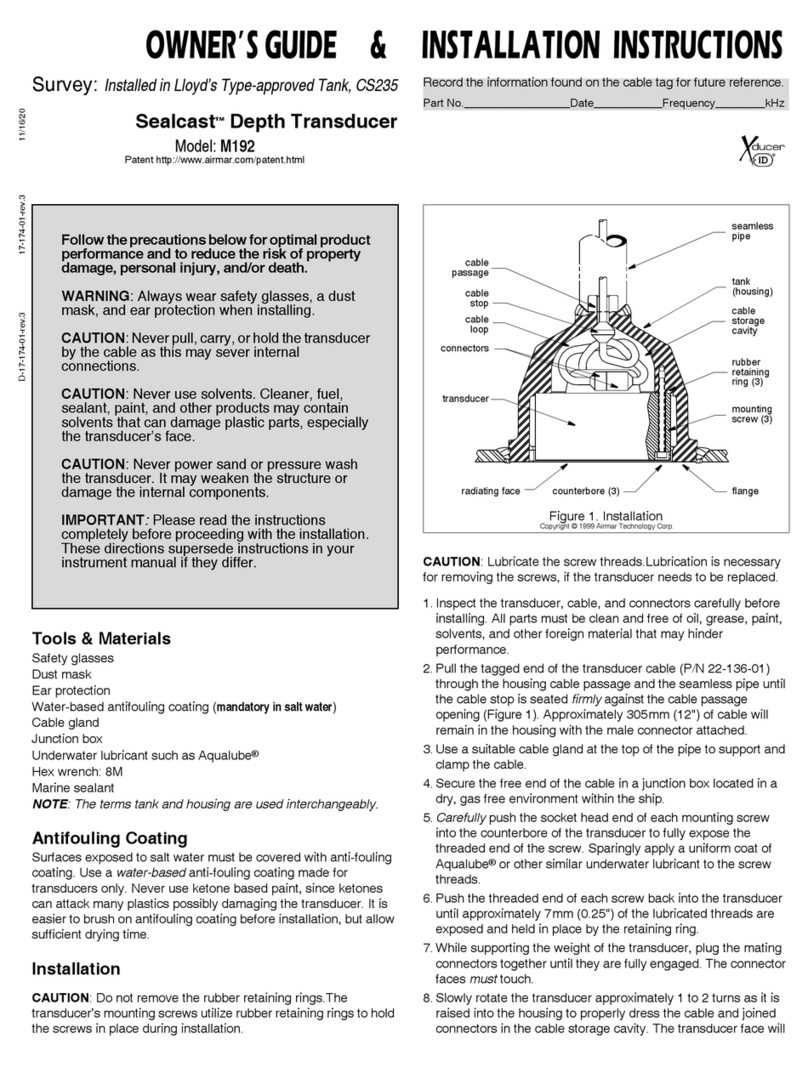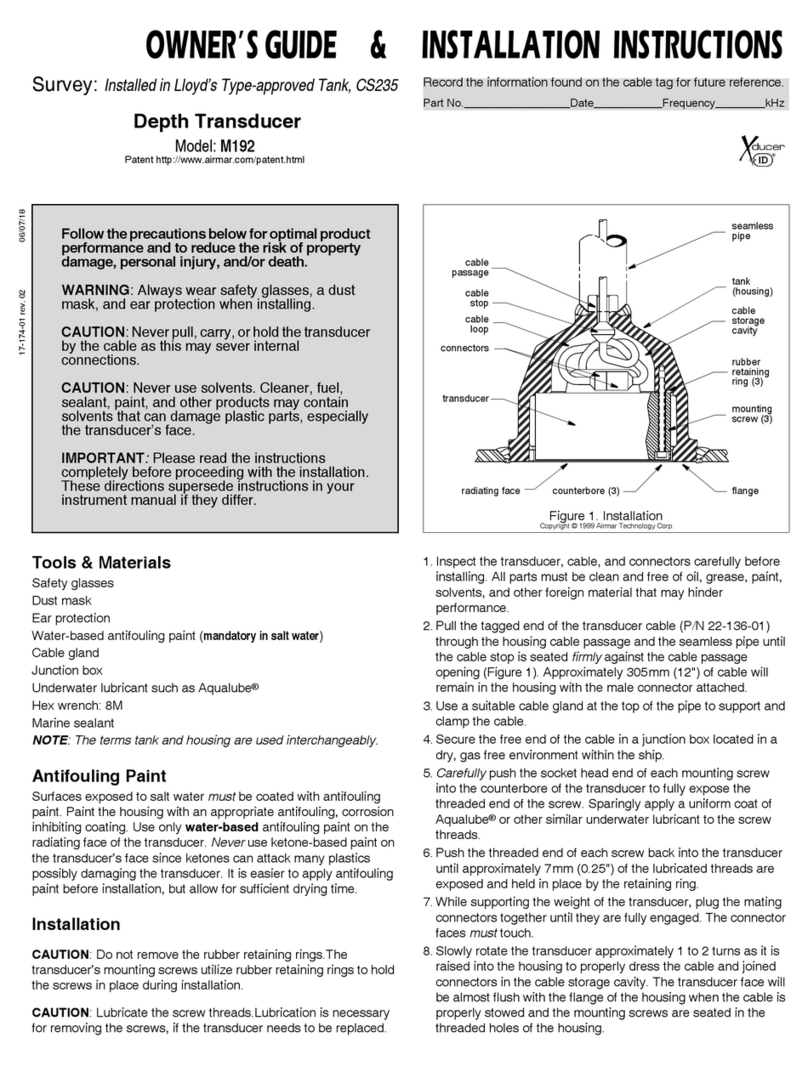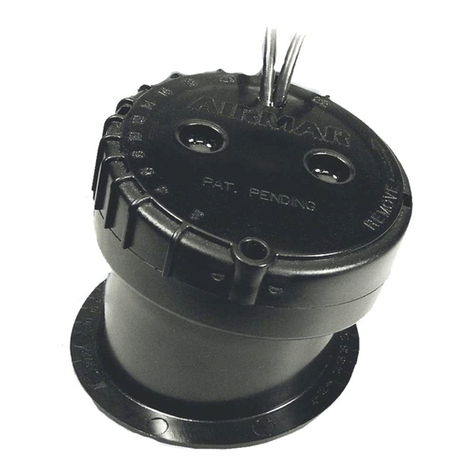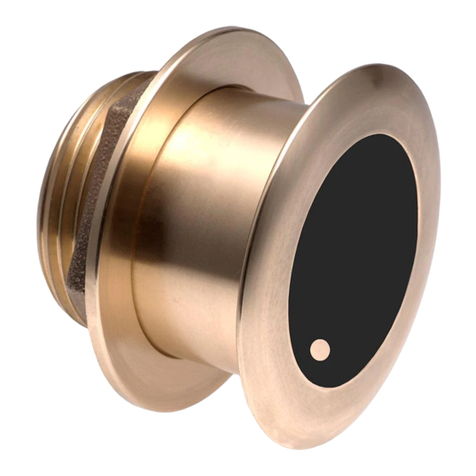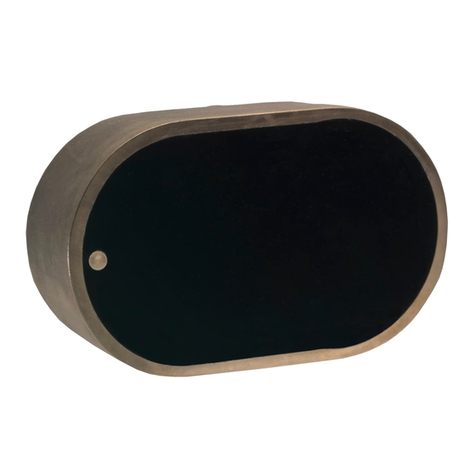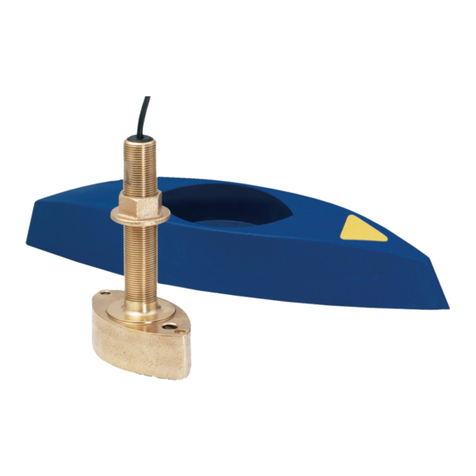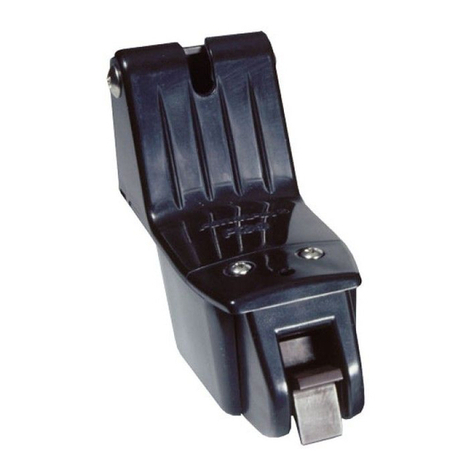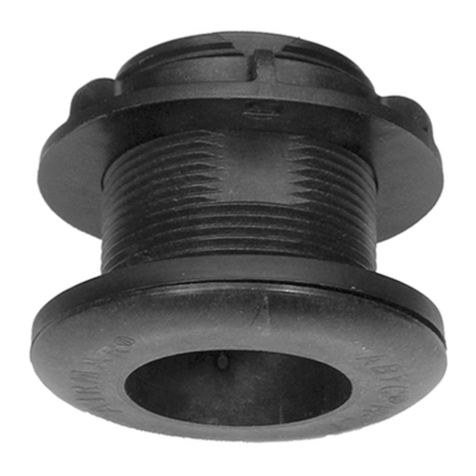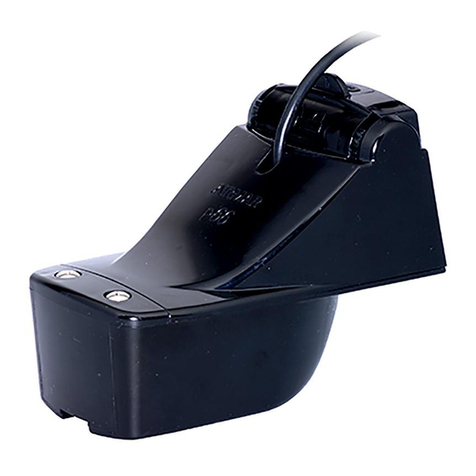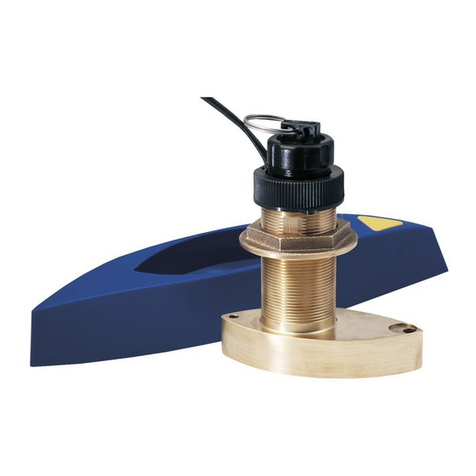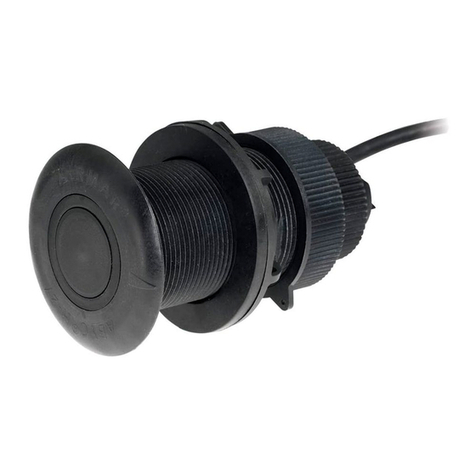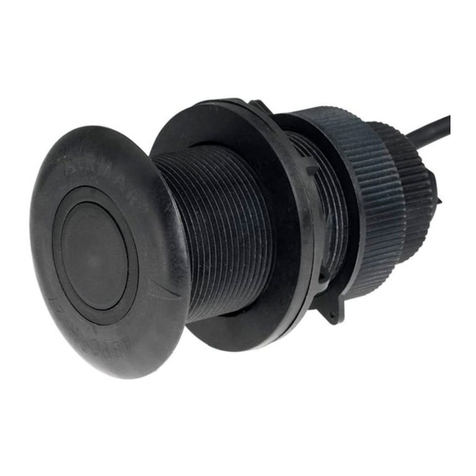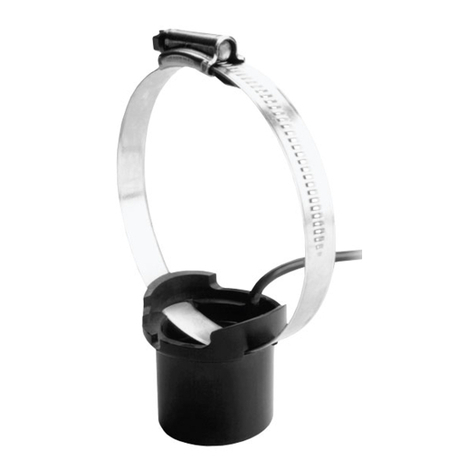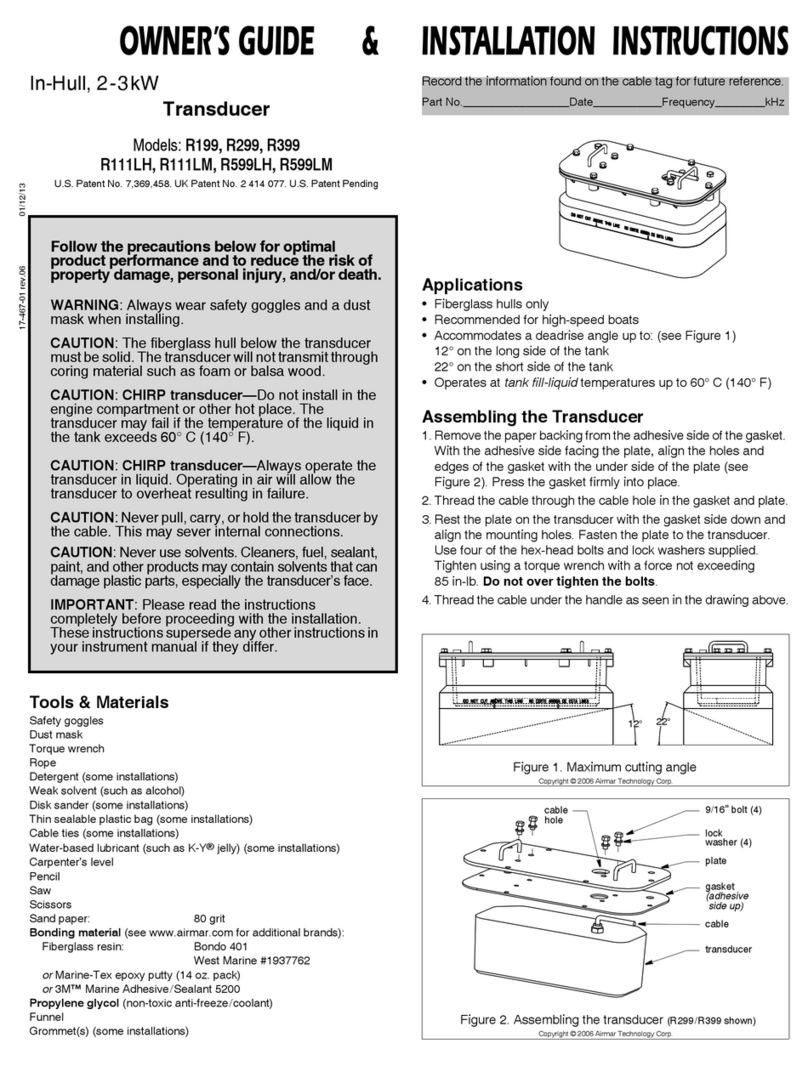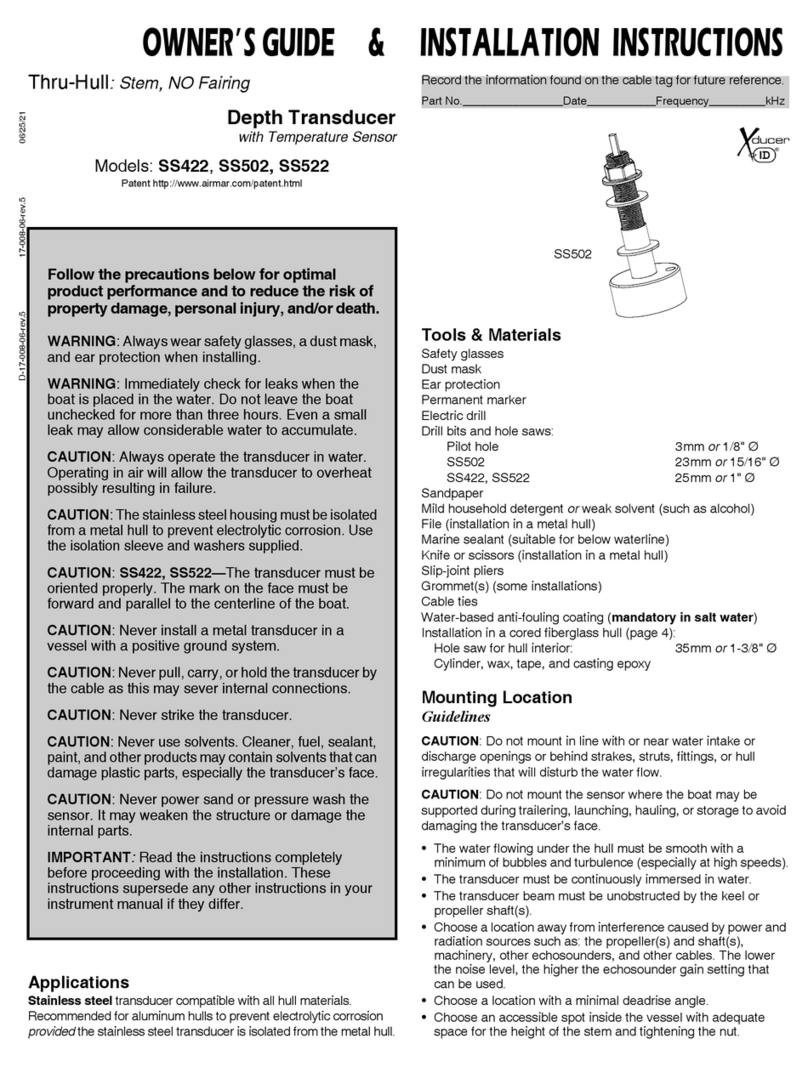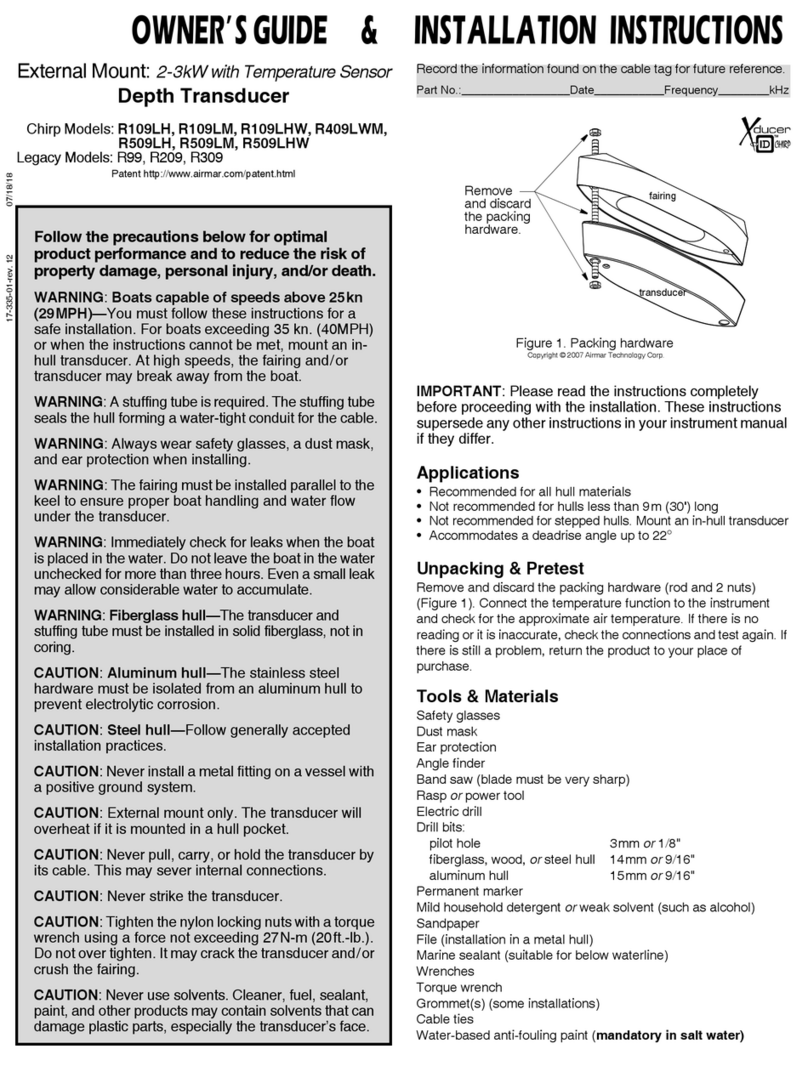
Observe the echosounder’s performance and compare it to the
baseline. Look for a stable depth reading that is similar to the
baseline. Compare the thickness and intensity of the bottom trace.
If the performance is close to the baseline, this is a good mounting
location. Remember, some energy is lost transmitting through the
hull. If the test reading differs markedly from the baseline, you will
need to find another location to install the transducer.
Note
: If there is no reading or it is erratic, the transducer may be
positioned over coring which is absorbing the acoustic energy.
Choose another location. If no other location is available, check
with the boat manufacturer to be certain coring is present.
Installation
Marking & Cutting
Caution
: For optimal performance, the transducer must be installed
so the beam will be aimed straight down. This is accomplished by
cutting the tank to match the deadrise angle of the hull.
1. The tank can be disassembled for installation in tight places.
Do not disassemble the tank unless it is necessary
. If the tank
will be installed as one unit, lightly tighten the socket-head cap
screws that hold the two halves of the tank together using the
Allen wrench supplied (see Figure 1). (Use a blade screwdriver to
remove the Allen wrench from the handle of the transducer. After
use, replace the Allen wrench in the recess.)
2. When you are satisfied that the selected mounting location is
optimal, place the tank
up-side-down
on the hull (see Figure 5).
The tank can be placed with either a short side or a long side
parallel to the centerline of the boat.
Caution
: Do not mark or cut the tank in the space labeled
“Do not cut above this line.”
3. Holding a carpenter’s level even with the
lower
corner of one of
the sides to be cut, draw a
level
line on the tank. Repeat this
process on the opposite side of the tank.
Connect the two
lines to form the SHORTEST side of the tank.
Be sure the
lines are level
. They will be the cutting guidelines.
Warning
: Always wear safety goggles and a dust mask.
4. Before cutting the tank,
be sure the TALLEST side will be
closest to the centerline (keel) of the boat after the tank is
installed
. And
be sure
to observe the “Do not cut above this
line.” Using a saw, cut the three sides of the tank along the
guidelines drawn. It may be necessary to further shape the tank
to the hull to ensure a liquid tight bond.
5. The tank is provided with a cork liner to reduce sound echoes.
After the tank has been cut, wrap the cork liner around the
inside
of the tank (see Figure 6). Butt the sides of the liner along
the center of the tallest side.
Note: There may be a gap
between the edges which will not affect performance.
Push the
cork liner up against the step on the inside of the tank. Trace the
bottom edge of the tank onto the liner.
6. Remove the cork liner from the tank. Use scissors to cut the
liner along the line drawn.
Bonding the Tank
Warning
: Always wear safety goggles and a dust mask.
1. To ensure a tight bond, the hull under and around the tank
must
be smooth and free of paint or any other finish
. If the surface is
rough, use a disk sander to smooth an area slightly larger than
the tank. Remove any dust, grease, or oil from the hull surface
with a weak solvent, such as alcohol. Dry the effected area.
2. Use 80 grit sand paper to sand the outside and inside of the tank
up 50mm (2") above the bottom edge. Remove the dust with a
weak solvent, such as alcohol. Dry the effected area.
Caution
: The tank must be liquid-tight
.
3. Use an approved bonding material (see Tools & Materials on
page 1). Glass the tank to the hull with fiberglass resin, using
standard fiberglass technique. Alternatively, apply a generous
bead of marine putty/sealant to the bottom edge of the tank
following the manufacturer’s instructions (see Figure 7). Press
the tank firmly in place. Apply a second bead around the inside of
the tank. And apply a third bead around the outside of the tank.
4. Allow the bonding material to cure. The seal
must
be liquid-tight.
3
Figure 5. Marking the cutting guidelines
(30º deadrise angle shown)
top
hull
carpenter’s
level
draw a level line
Do not mark
below this line
Copyright © 2006, 2007 Airmar Technology Corp.
even with the
Figure 6. Fitting the cork liner
(30º angle shown)
trace bottom
edge of tank
onto cork liner
gap
Copyright © 2006 Airmar Technology Corp.
Figure 7. Bonding the tank
fiberglass
hull
in place
or
apply
three beads
of marine
after bonding
putty/sealant
Copyright © 2006, 2007 Airmar Technology Corp.
material cures,
insert cork liner
lower corner of
opposite sides
of tank
